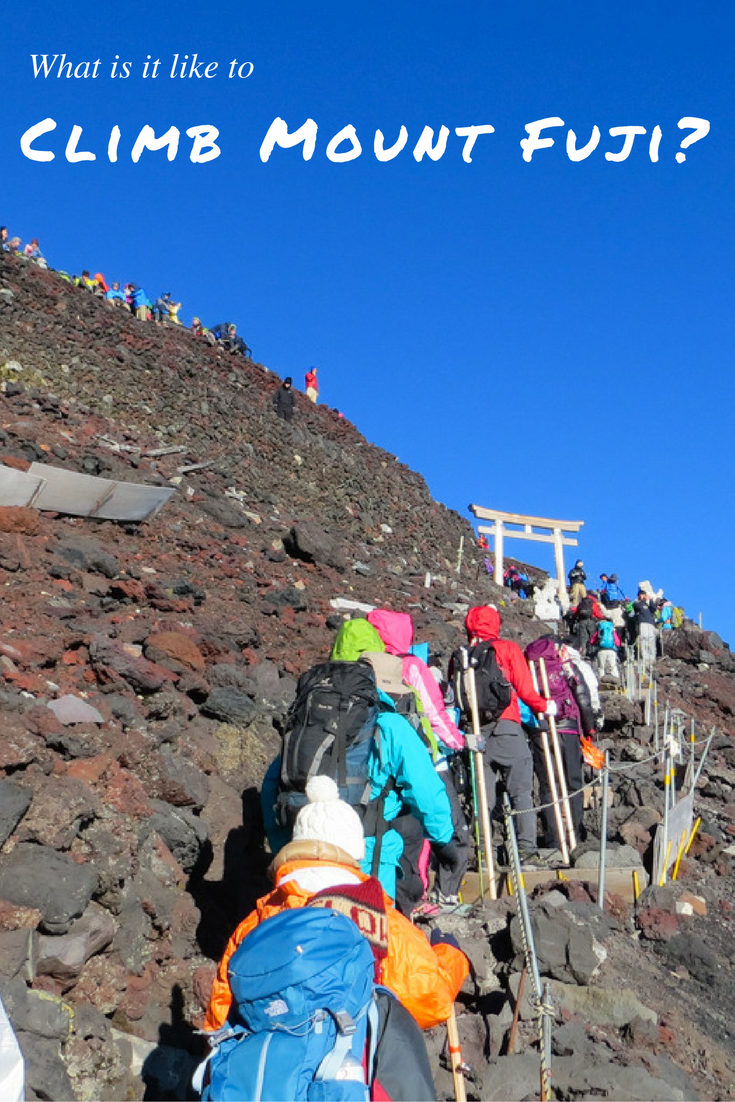
One of the highlights of my time living in Japan was the amazing people we met, and Kat is one of them. As a daring New Yorker and a veteran traveler, she’s done some pretty crazy things in her day. Climbing Fuji-san has to be near the top of her list. Whether you’re considering climbing Fuji or not, her advice and explanation of what to expect are pretty interesting.
Kat prefaces the conversation by saying “It was the best and worst decision. Looking back at it, I’m glad I did it and it felt like such an accomplishment. While you’re doing it, you’re kind of like ‘Whose idea was this?!’” When pushed, she claims she would do it again – but she would be more prepared and take it more seriously next time!
Before you even get started, you have to do a few things to prepare for the trip. Reserve space in a sleeping hut at the Eighth Station, book your bus tickets to and from Tokyo, and get some supplies. Read through to the end for more specifics about what you’ll want to bring with you on the trip. In terms of cost, climbing Fuji is technically free. However, you’ll pay about USD$90/person to reserve the sleeping hut and about USD$40/person for the bus fare (subject to slight variances based on the exchange rate, of course).
The climbing season is short – July through mid-September. These also happen to be the hottest months in Tokyo, which means you’ll start off the day in sweltering heat and humidity, then gradually add layers as you climb the mountain. By the end of the day, you’ll have a down jacket, a winter hat, hand warmers and gloves. There won’t be snow on The Summit during these months, but it will still be COLD.
Climbing Mount Fuji is basically a two-day excursion. Day One starts by catching a two-hour bus from central Tokyo early in the morning. (Or if you’re like Kat, you oversleep and miss that bus then have to do a train-bus combo that gets you to your starting point about 4 hours later than planned. Her biggest takeaway from the whole experience: don’t miss your bus.) It drops you off at the Fifth Station, where your hike begins. Buy a climbing stick and a canister of oxygen at the Fifth Station, and have a light meal before you get started. The climbing stick will help you once the climb becomes very vertical (you can also have it stamped at each station as and keep as a pretty amazing souvenir), and the oxygen is important to stave off altitude sickness. Take a few minutes to stretch while you’re there.
This is not a hike. You’re climbing over rocks and steps that are built into the side of the mountain with a rope to help you. You’re going straight up for much of the climb.
You have to hike away from the Fifth Station to another side of the mountain to pick up the trail. It might feel strange because you’re going downhill at first, but don’t be nervous! You’re headed the right way and you’ll start heading up soon. Enjoy this part while it lasts, because the vertical climb is no joke.
There are other rest stations along the way, where you can grab a snack (or a beer), use the restroom, and sit for a few minutes. Start using the oxygen around the Sixth Station to stay ahead of altitude sickness. You climb about six hours to get to a hut at the Eighth Station, where you spend the night in a communal sleeping area with about 50 other people.
Just a few important notes on the Eighth Station:
- There are two Eighth Stations. The first one is not the one you want, so don’t get too excited when you see it!
- There is some climbing between the different sleeping huts, so make sure you carefully check which hut you’re assigned to. It’s very dangerous to climb down the mountain on this path, so you want to avoid passing your hut and needing to backtrack.
- It helps immensely to reach your hut before dark. Kat didn’t reach her hut until close to 8pm, and sunset is around 7pm in the summer. She says, “I’d start a lot earlier, and I’d get up to the hut at about 6pm. It sucks when you’re climbing and you can’t see what you’re up against.” You’ll get a sleeping bag and a spot on the floor – earlybirds get a curtained-off area with slightly more privacy.
The main reason people climb Fuji is to see the sunrise from the top of the mountain, and the sun rises EARLY in Japan during the summer. Like they’re-probably-in-the-wrong-time-zone-early. Like 4:30am-early (it really messes with you from a jet lag perspective, too!).
Day Two needs to start around midnight or 1:00 am if you’re going to get to the top in order to see the sunrise. You might think that because you’re on a mountain, there won’t be many people out at 1:00 am. You would be wrong. This is a very popular attraction, and everyone is trying to reach the summit for sunrise (in fact, they estimate that 200,000 people will climb Mount Fuji in 2016). Kat left around 2 am and describes the morning climb as agonizing. The path is packed with people snaking up the mountain, and you’ll take one large step up then have to stop for 20 minutes while you wait for the line to advance. There’s nowhere to sit or rest, and Kat’s ascent from the Eighth Station to the summit took about three hours.
There’s more to see at the top besides the sunset. You can walk around the perimeter of the crater, but Kat and her climbing partner had to start heading down the mountain in order to catch the bus that they reserved tickets on. If you think you want to spend time at the top, be sure to account for that when booking your bus ticket back to Tokyo.
The descent is a (slightly) controlled slide. It takes about two hours, and this is where hiking boots really come in handy. Kat is a sneaker fiend, and she wore Jordans to climb Mount Fuji. She deeply regretted this decision on the descent.
Kat’s last comment: Expect to be really sore the next day. She describes rolling off the couch and crawling to the bathroom to avoid having to stand up! I remember meeting her for dinner the next evening and she could hardly move.
What to bring in a backpack:
- Hand warmers
- Down jacket
- Gloves
- Layers (for top AND bottom)
- Hoodie or winter hat
- Head lamp
- Hiking boots
- Granola bars/snacks (onigiri are perfect)
- Water
- Coins for the toilets (optional, but they ask for donations. Also: who cleans the toilets on the side of Mount Fuji?)
- Cash for snacks, food, the hut
Kat’s advice, in summary:
- Start early (and don’t miss your bus.)
- Get a walking stick.
- Stretch before you start!
- Try to make it to your sleeping hut before dark.
- Check each hut to see if it’s yours so you don’t pass it.
- Leave REALLY early in the morning if you want to see the sunrise.
- Allow yourself plenty of time to catch your bus on the way back down the mountain.
Do you have any advice for someone thinking about climbing Mount Fuji? Or are you considering doing it yourself?
Thank you to Kat for letting me interview her, and thank you to Jonathan Venuto for the photos!
If you enjoyed this post, check out this interview with Laurence, a charming French woman who moved her family to French Polynesia.
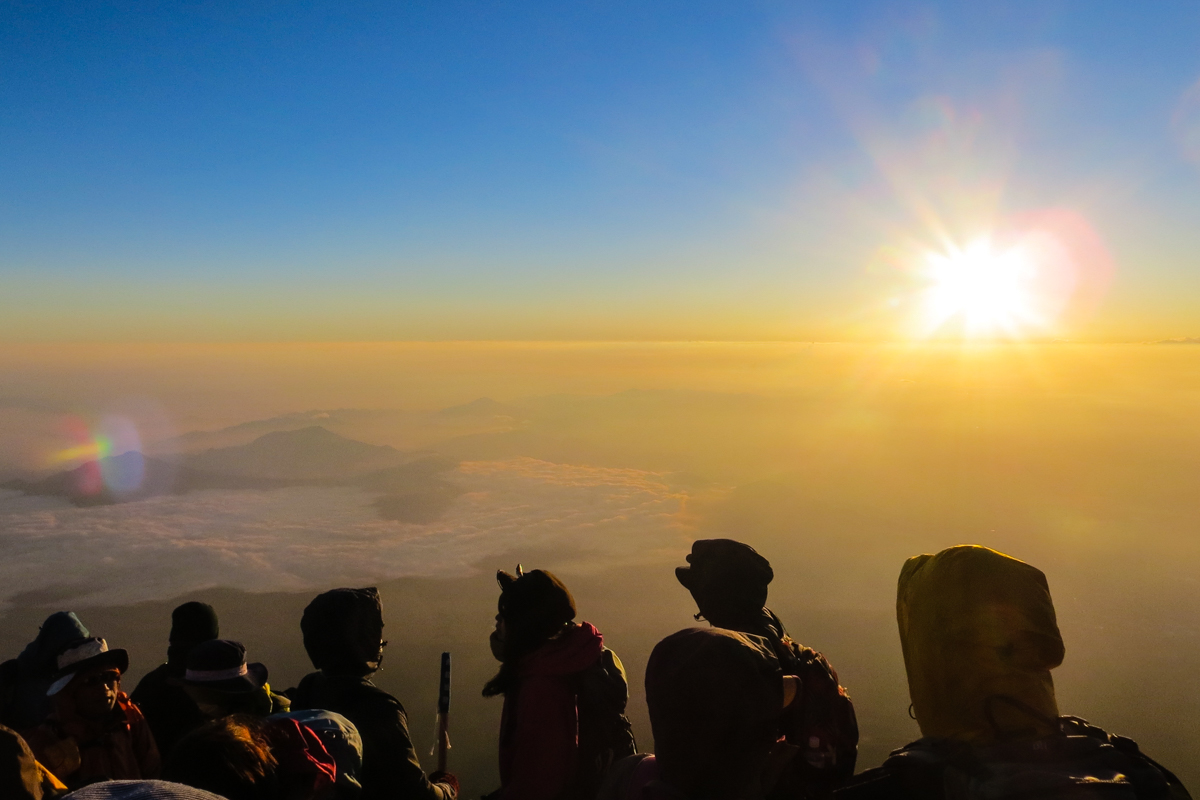
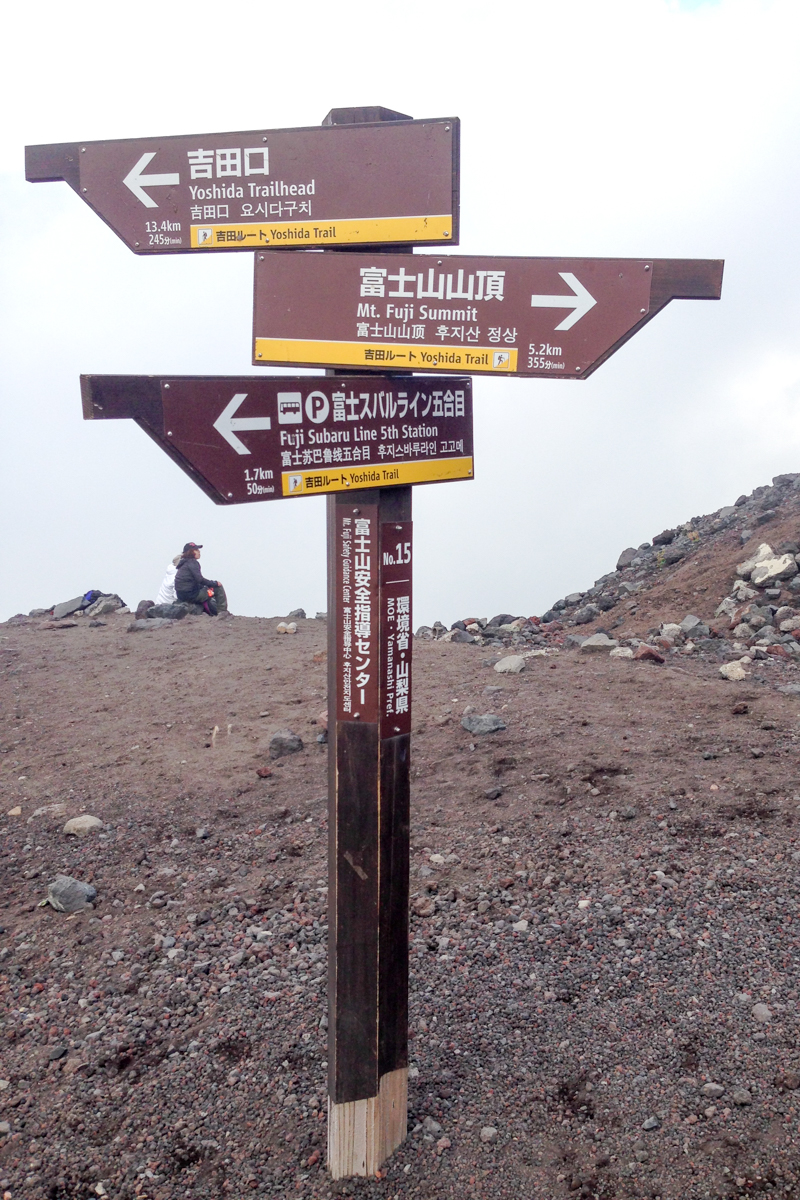
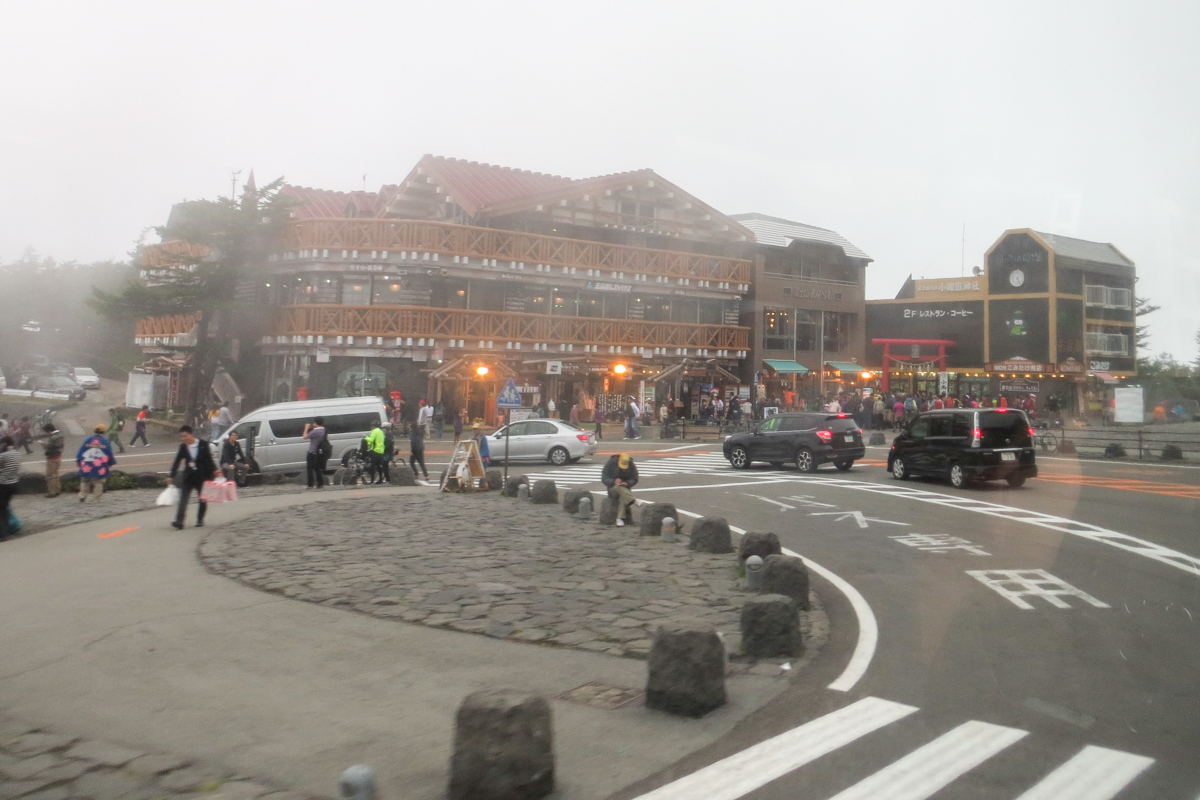
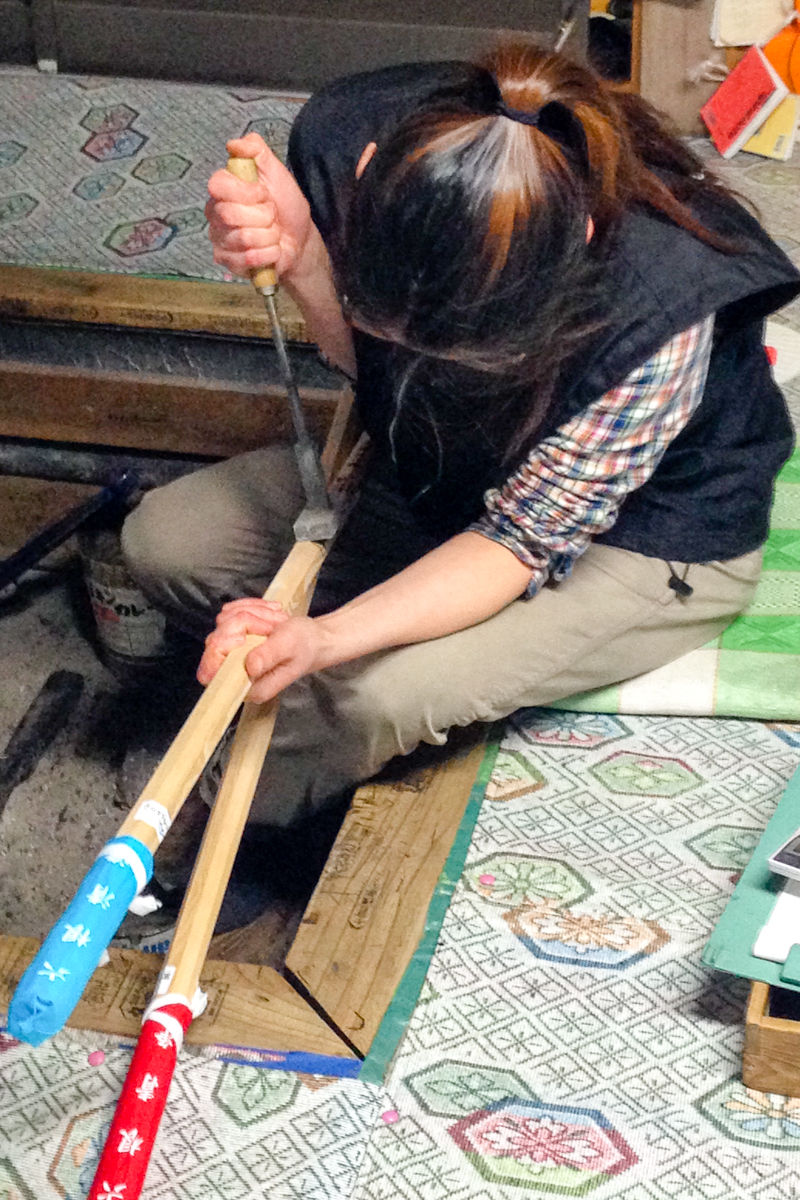
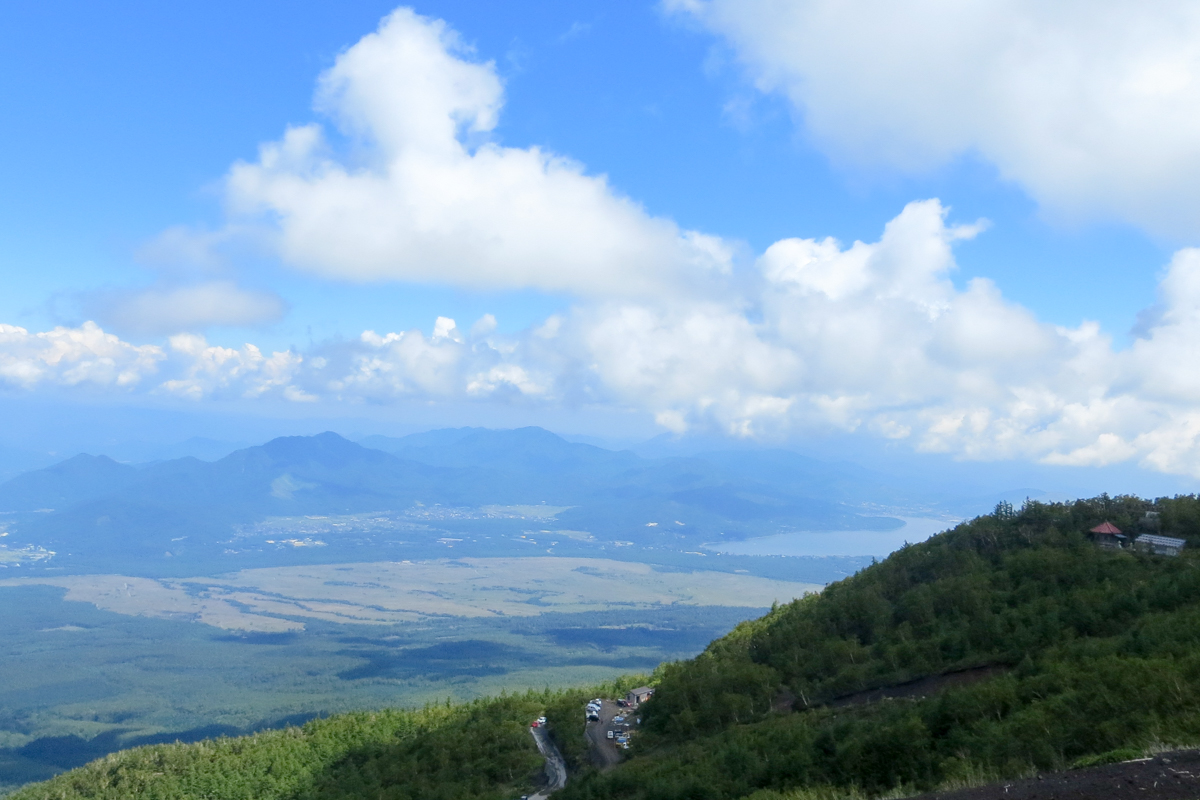
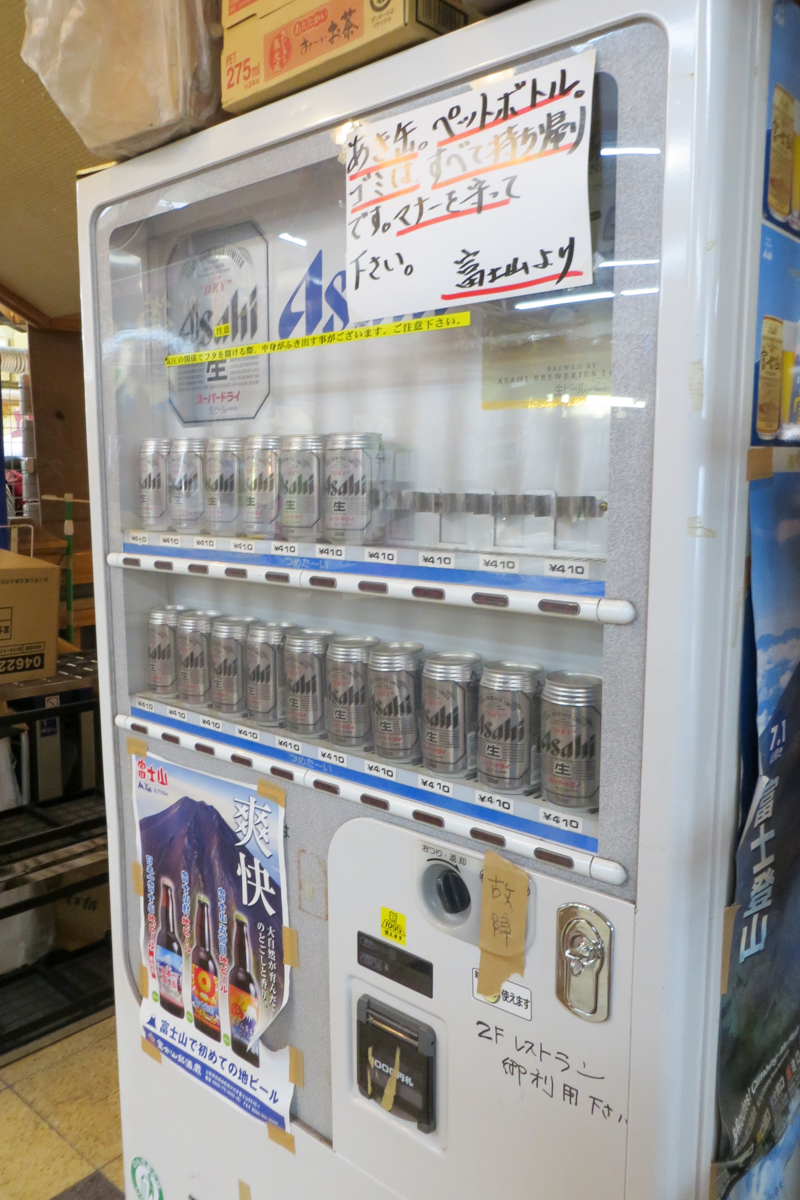
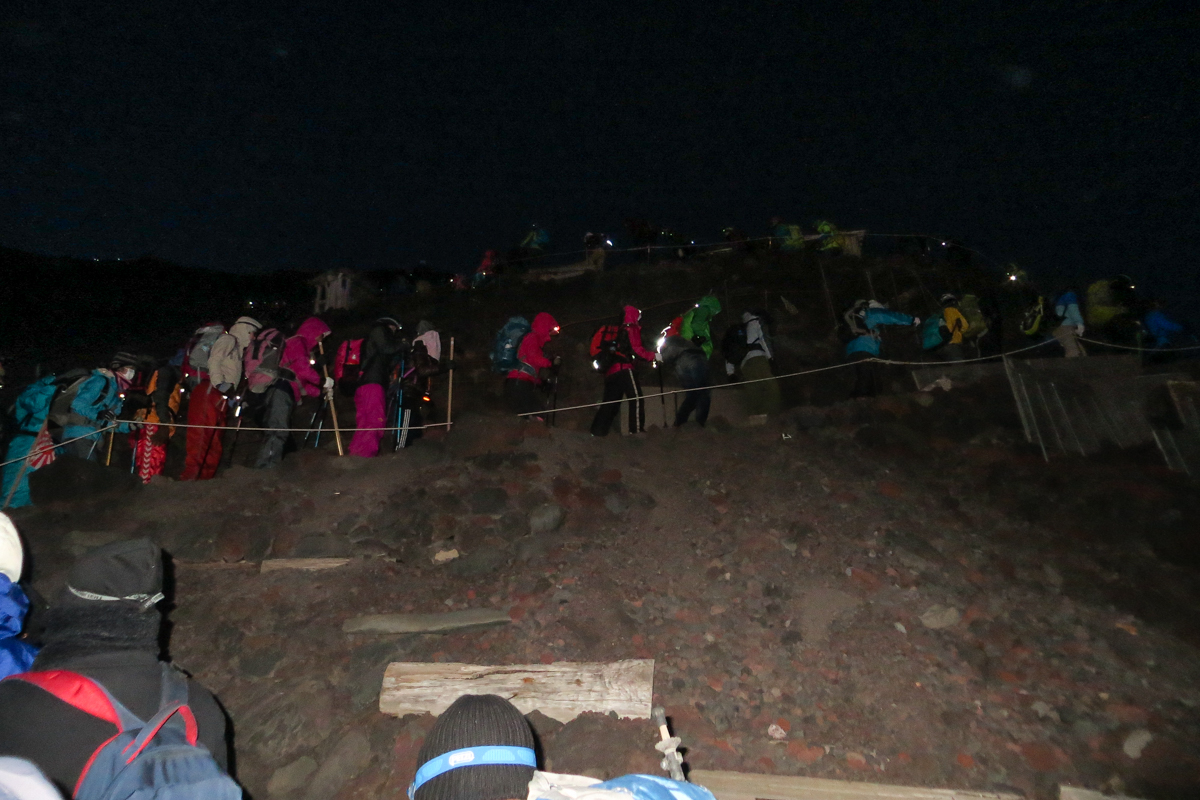
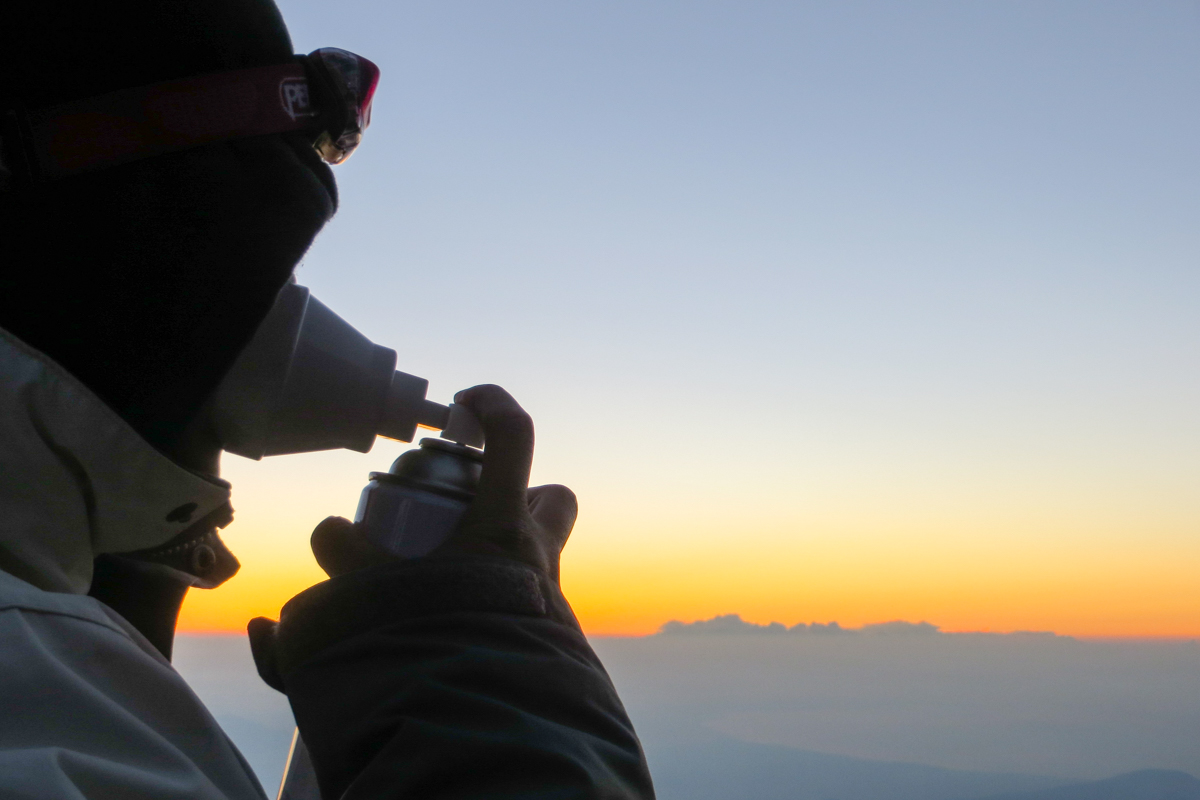
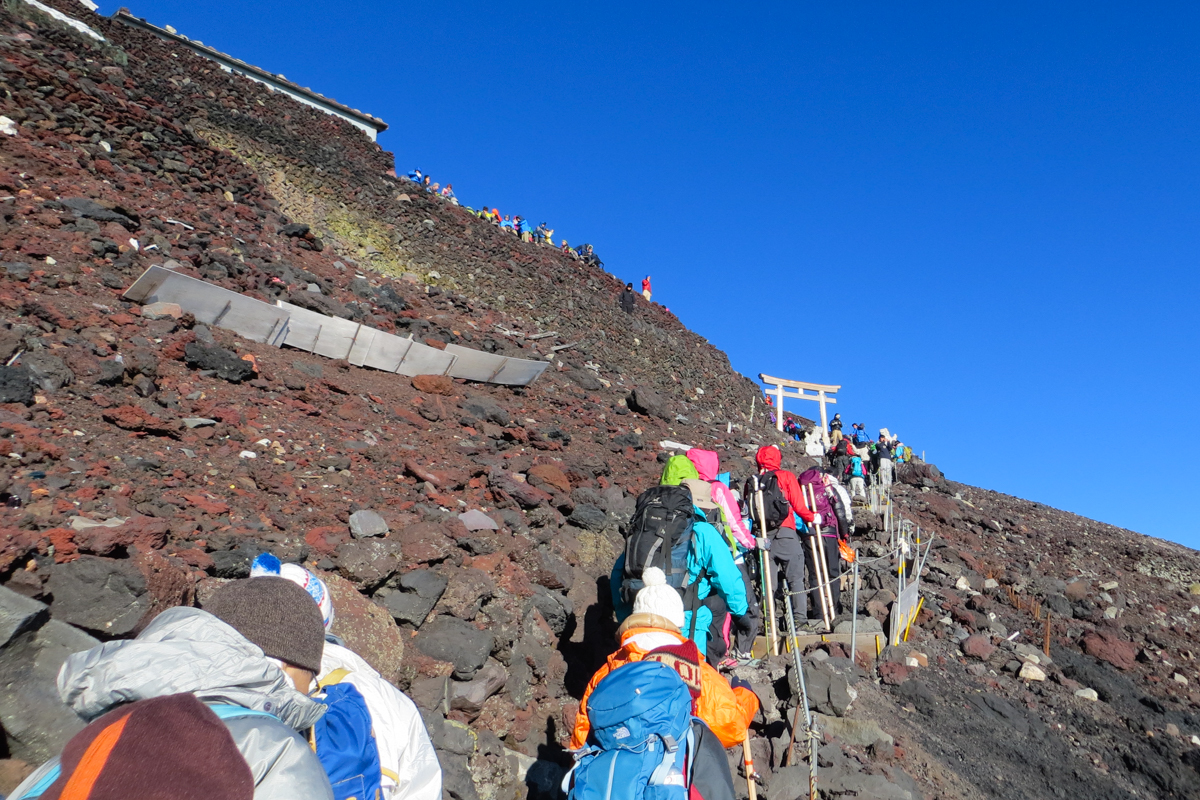
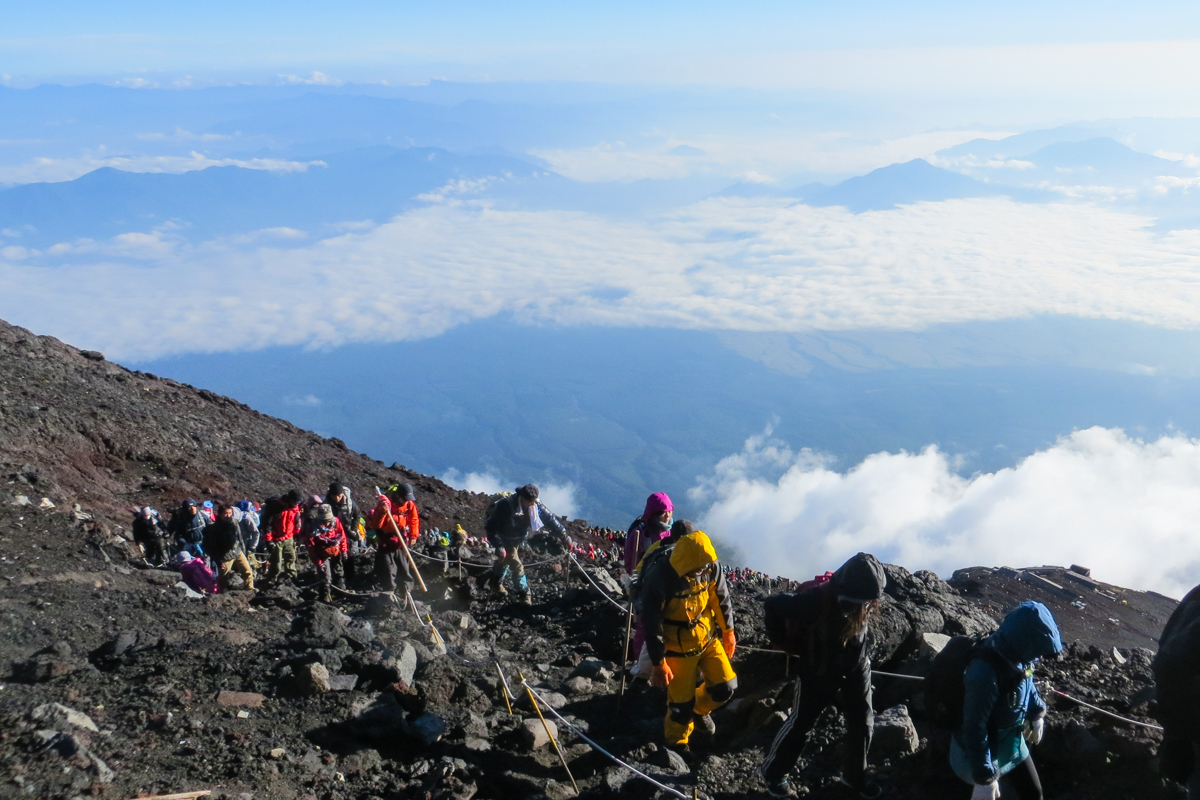
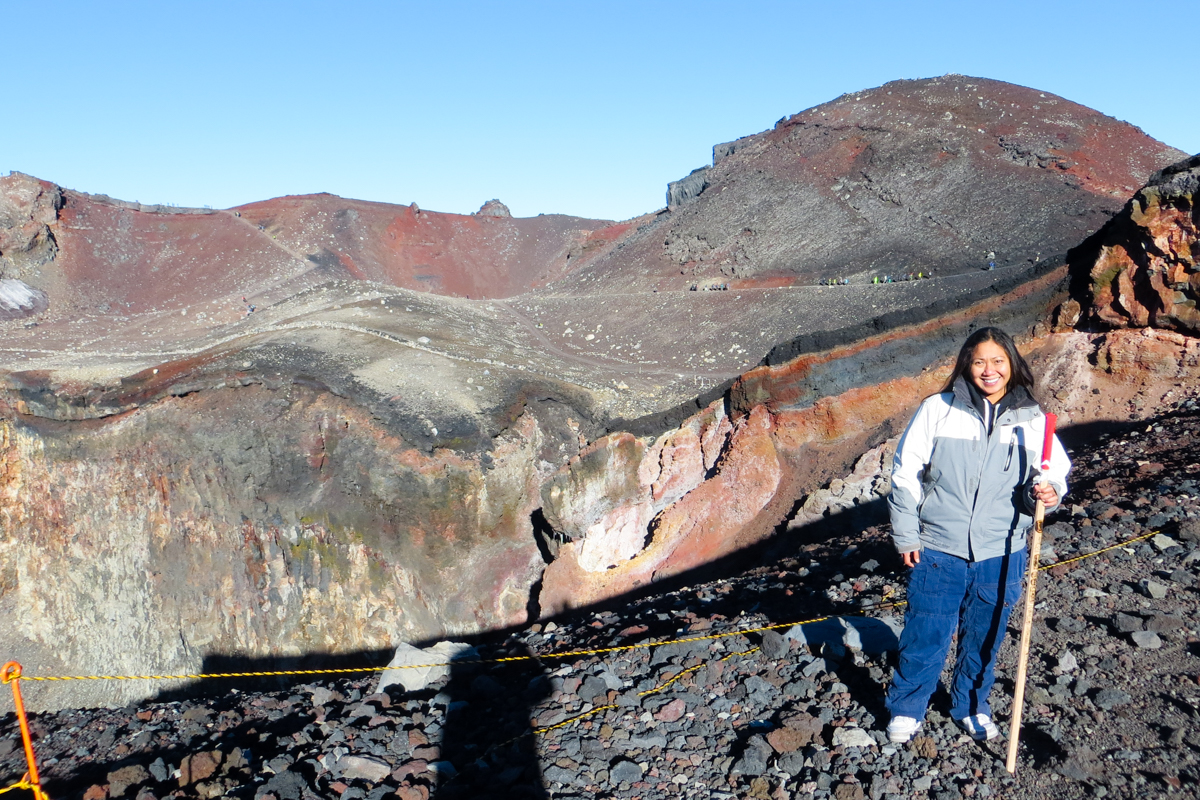
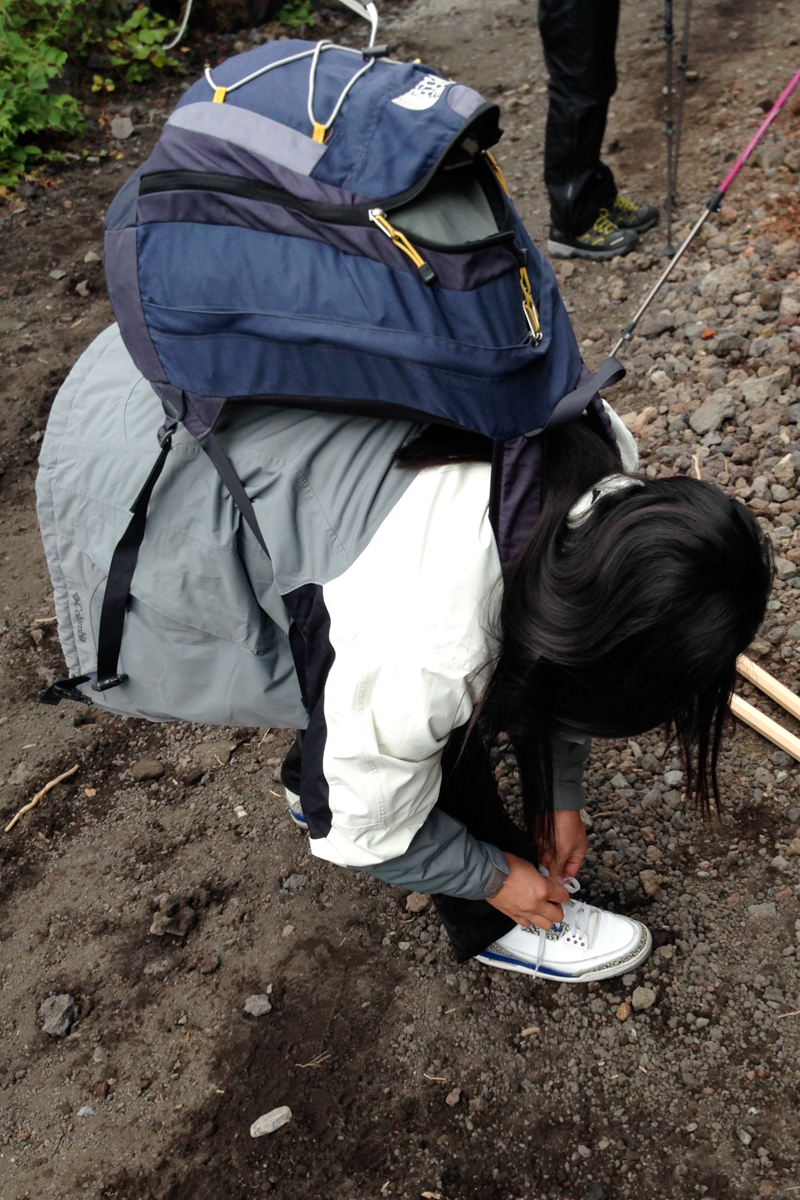
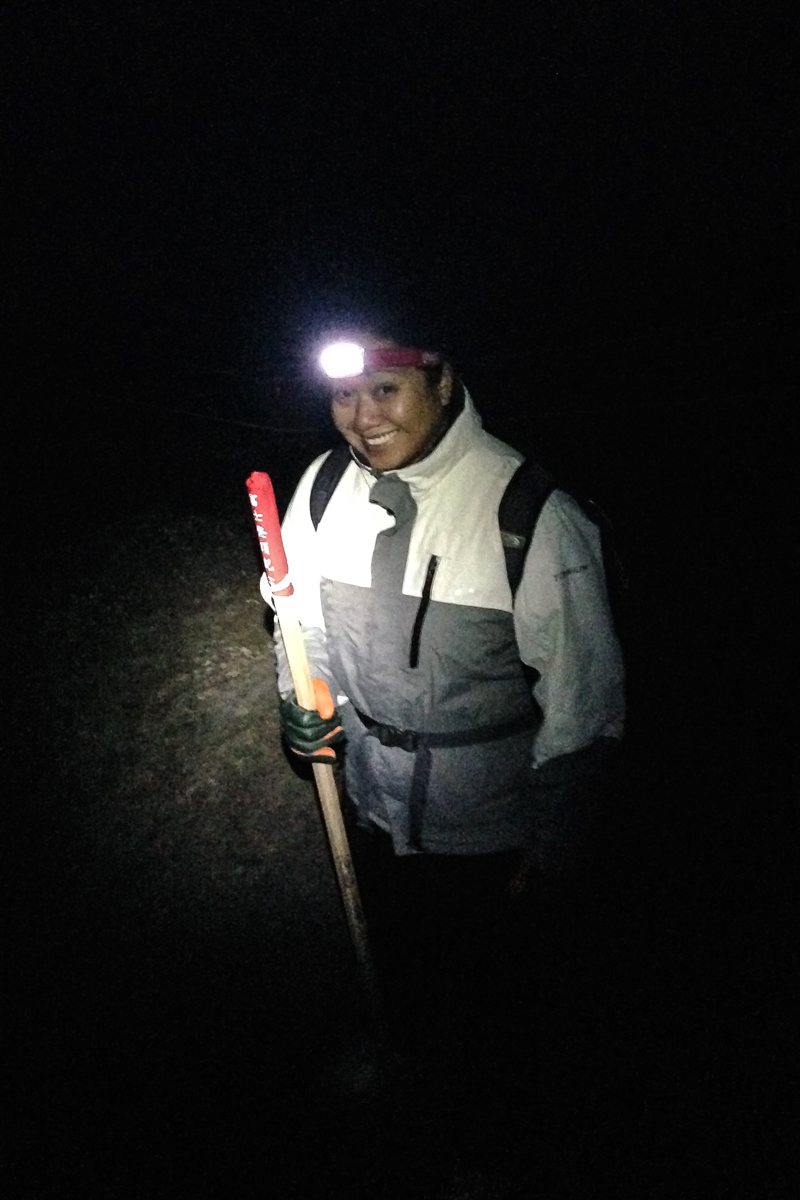
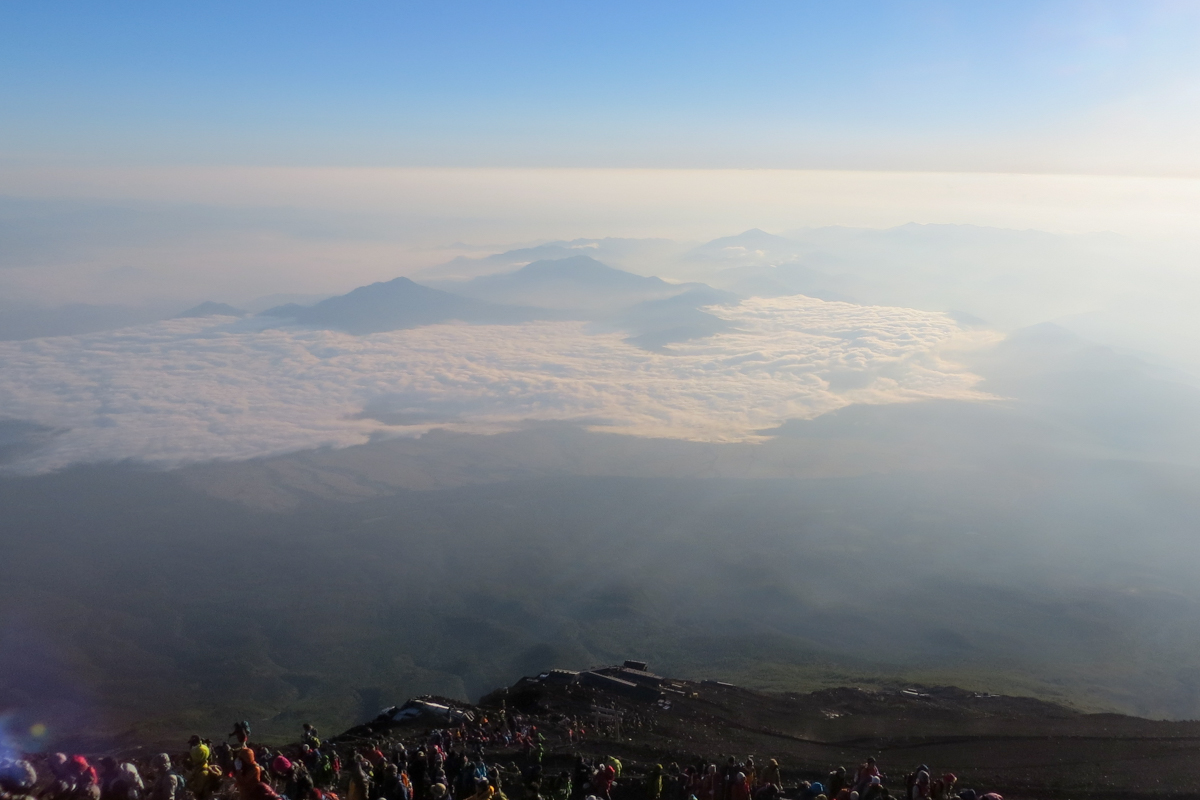
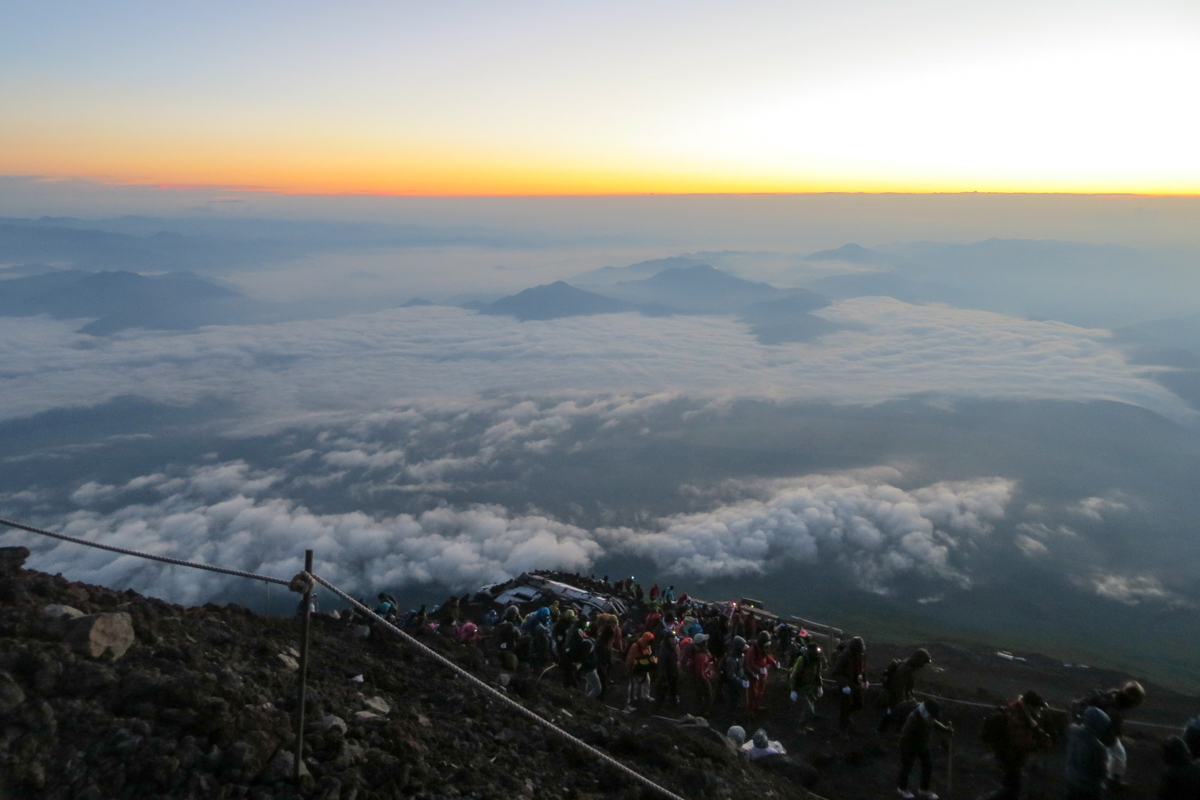
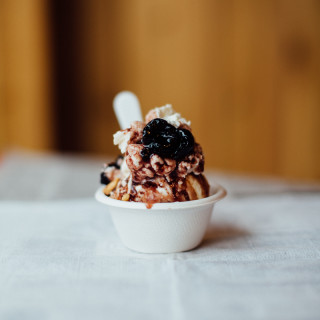
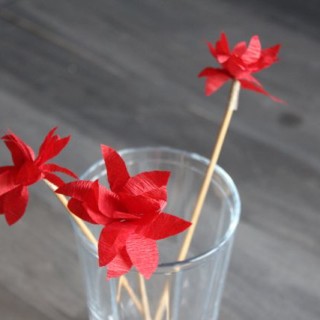

I climbed Mt. Fuji when I studied abroad in Japan, and while it was pretty amazing, what I remember most is how during the trip up, all I could think about was how I could possibly get down. I was kinda hoping it was all a dream and I’d wake up in my bed. 😛